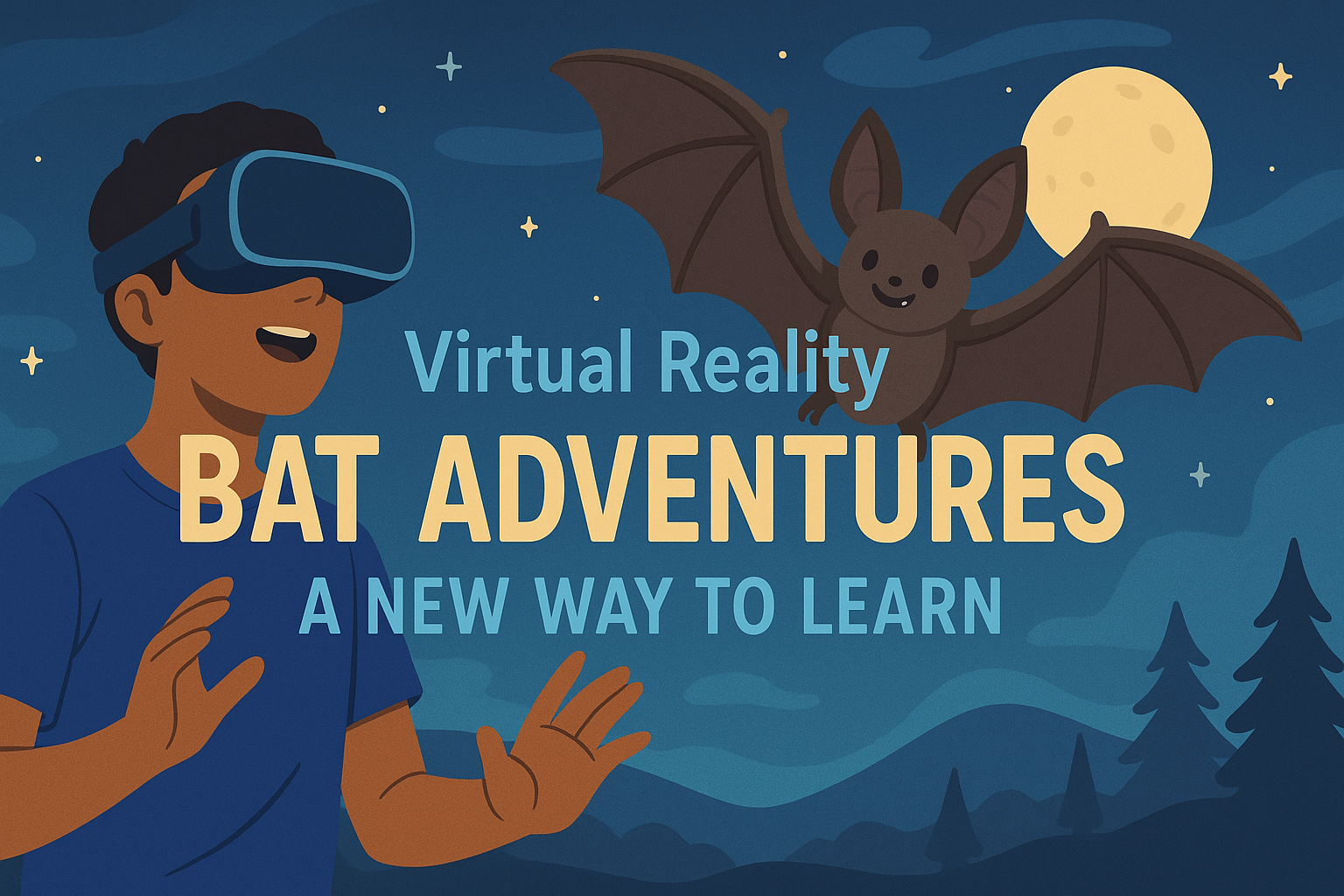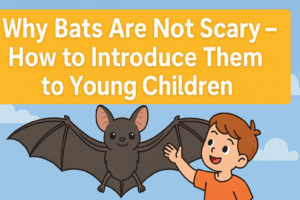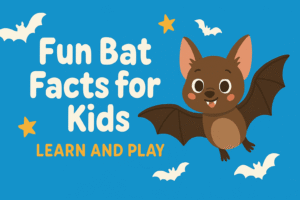Oh yeah. Strap in, my curious friend—because we’re diving wings-first into a world where science, tech, and a little echolocation come together for the most unexpectedly awesome learning experience you didn’t know you needed.
Whether you’re a kid who thinks bats are spooky, a teacher who wants your classroom to stop yawning, or just someone who secretly wishes they could fly—Virtual Reality Bat Adventures are where it’s at.
Why Virtual Reality + Bats = Brain Explosion (in a good way)
Let’s be real. Learning about bats from a textbook? Snooze fest.
Reading a fact list like:
“Bats are mammals. They use echolocation. They eat bugs.”
Yeah, cool, but where’s the adventure?
Now imagine this:
You slip on a VR headset.
Suddenly, you’re flying through the jungle at night.
Your wings flap as you zoom past trees.
You hear a ping—you’ve just used echolocation to find a tasty bug snack.
A slithery snake tries to swipe your dinner. You dodge.
You land upside-down in a dark cave filled with hundreds of your squeaky friends.
That’s what I’m talkin’ about.
Immersive learning is no joke—it makes your brain light up like a Christmas tree.
Let Me Tell You a Quick Story…
I once gave a VR headset to my 10-year-old cousin Max. He’s smart but gets bored with school stuff FAST. Like, blink-and-he’s-done bored. I asked him to try a VR bat simulation. He sighed, put it on… and didn’t take it off for 30 minutes.
Later, he looked at me with wide eyes and said:
“I had to fly through a rainforest and find food without getting eaten. Bats are SO cool. I didn’t know they were like the Jedi of the animal world.”
Max now has three bat books, a bat poster, and won’t stop saying the word “echolocation” at dinner.
Mission. Accomplished.
What Do You Learn in a VR Bat Adventure?
You’d be surprised at how much brain fuel is packed into a 10-minute experience.
1. Bat Biology Basics
- What bats eat (spoiler: not your blood)
- How they sleep, hunt, and navigate in total darkness
- Why some bats have noses that look like tiny radar dishes
2. Echolocation in Action
You don’t just read about echolocation.
You become the bat.
You feel how sounds bounce off trees, bugs, even predators.
You learn why it’s WAY cooler than night vision goggles.
3. Ecosystem Awareness
You start to see how bats fit into the big picture.
- They eat mosquitoes—thank you, bat friends
- They pollinate plants (including bananas!)
- They keep ecosystems balanced in ways most people don’t realize
4. Conservation Vibes
VR shows what happens when bats lose their homes or get sick (like with white-nose syndrome).
You start caring. Not because someone told you to, but because you lived it.
The Nerdy Science Behind It (But in Chill Language)
Our brains love stories and movement.
VR taps into spatial learning—you remember stuff better when you see it in 3D space, move through it, and interact with it.
It’s like the difference between:
- Reading about a volcano vs. walking through a virtual lava tunnel
- Reading “bats live in caves” vs. hanging upside-down next to 500 other bats, trying not to drop your virtual dinner
When kids (and adults!) use VR to experience learning, it sticks.
Hardcore.
Sticky like bat guano on a cave wall. (Sorry, gross. But true.)
Top VR Bat Adventures to Try (Yes, They Exist!)
Here’s the cool part. These aren’t just in some lab—they’re already available.
1. Bat Immersion Experience – Bat Conservation International
- Free online VR videos
- 360-degree view of real caves and bat habitats
- Narrated by real scientists (but not in a boring robot voice)
2. Echo Earth VR
- Designed to teach how animals like bats use echolocation
- Great for classrooms
- Interactive features: catch bugs, dodge owls, survive the night
3. Google Earth VR (with Nature Add-ons)
- Explore bat caves across the globe
- Zoom into rainforest regions where specific bat species live
Why Teachers & Parents Love It
Virtual reality bat adventures aren’t just fun—they’re secretly educational ninja tools.
Teachers say:
- “My class went from fidgety to focused in minutes.”
- “Students remembered details we hadn’t even covered in textbooks.”
- “We tied it into biology, geography, AND writing assignments.”
Parents say:
- “My kid actually asked to go back to the VR bat cave.”
- “He taught me more about bats in 15 minutes than I knew my whole life.”
Fun Activities to Pair with Your VR Bat Adventure
So, you’ve explored the virtual skies. Now what? Make it a whole themed day!
1. Draw Your Own Bat Species
What would your dream bat look like? Rainbow wings? Laser vision? Give it a backstory and habitat.
2. Write a “Day in the Life of a Bat” Journal Entry
How does it feel to sleep upside-down all day and hunt bugs all night?
3. Bat Trivia Game Night
Use what you learned to quiz your family or friends. Winner gets a bat cookie. (Or just… a cookie.)
Why It Matters
Bats are misunderstood.
They’re NOT blind.
They’re NOT flying mice.
They’re NOT out to get your hair.
And they’re DEFINITELY not boring.
But kids (and adults) won’t remember that from a textbook.
They will remember what they feel.
What they experience.
What they live—even for just 10 minutes in a headset.
Virtual reality turns empathy, curiosity, and awe into real learning. It’s not about replacing teachers or books. It’s about amplifying wonder.
Final Thought:
Bats may be nocturnal, but with VR, they’re stepping into the spotlight.
And you? You’re not just watching.
You’re flying right there with them.
So next time you hear someone say “ew, bats are gross,”
just hand them a headset and say:
“Go fly a mile in their wings.”




